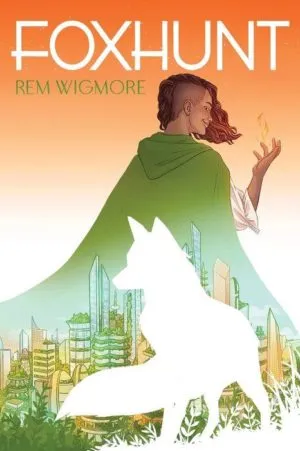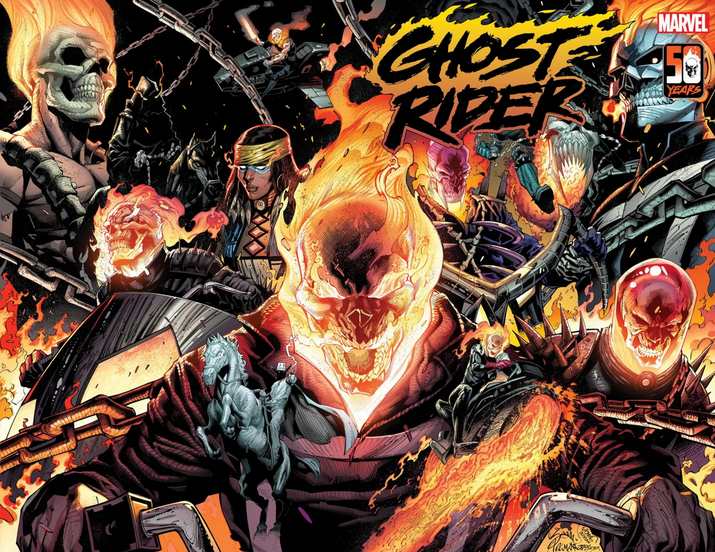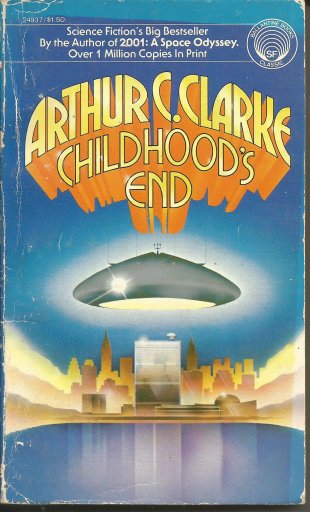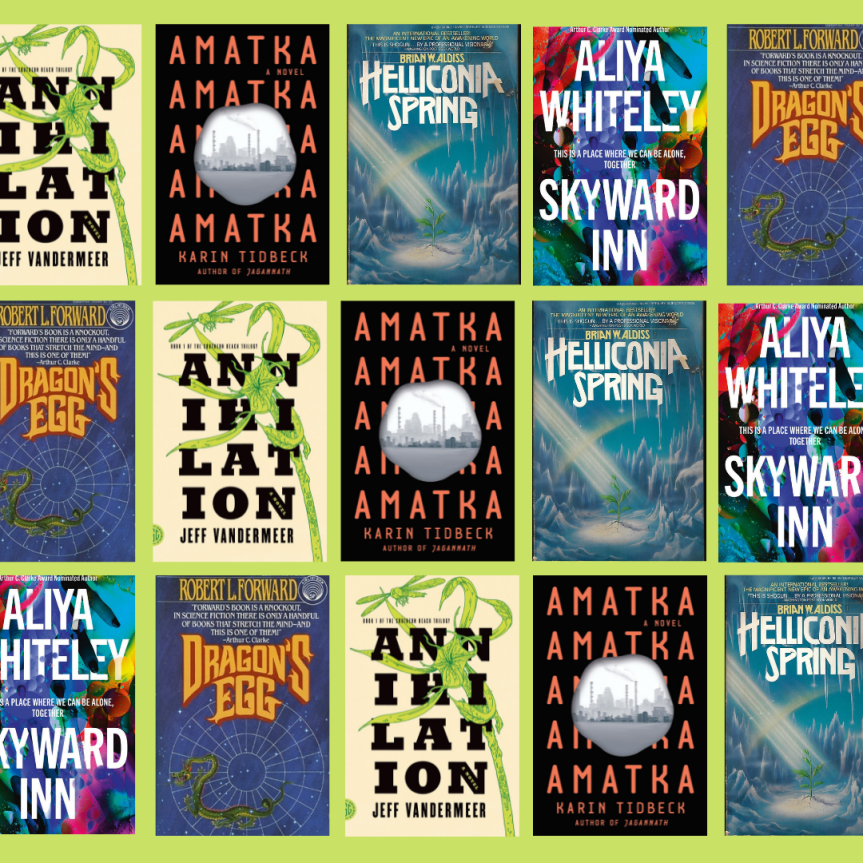In 2022’s first issue of Galaxy’s Edge, we’ve seen stories from new and old writers alike, book reviews by Robert Chwedyk, and, of course, an interview from Jean Marie Ward.
In this issue, she chats with John Scalzi, best-selling sci fi author and former president of the Science Fiction and Fantasy Writers of America.
From Rock Stars to Redshirts and Kaiju
At any moment in time, the number of cultural figures immediately recognizable by a single name can be numbered on a single hand. For over ten years, John Scalzi has been one of those rare few. His last name alone not only conjures images of fast-paced, witty, pop culture–infused science fiction, but also the attitudes and opinions that have made his long-running blog, Whatever, a must-read for fans and detractors alike. Despite over 15 best-selling books, numerous published novellas and short stories, produced scripts, and Hugo Awards, he retains the work ethic and crusading spirit of the journalist he used to be—and on occasion still is. His unprecedented three consecutive terms as president of the Science Fiction and Fantasy Writers of America focused on making SFWA a better advocate for writers in the marketplace. In the years since, he has continued to promote the genre and its writers. Catching up with Scalzi as he prepared for the March release of Kaiju Preservation Society, Galaxy’s Edge quizzed him about how to grow a writing career out of pop culture, a philosophy degree, and a lot of low-hanging fruit.
Galaxy’s Edge: When did you first realize you wanted to be a writer? Was it before or after you wanted to become a rock star?
John Scalzi: I think everybody wants to be a rock star from a very early age. I think the very first time I thought of being a rock star was in 1977 when, as an eight-year-old, I thought I had a more than passing resemblance to Shaun Cassidy. As it turns out, that resemblance no longer exists. Shaun Cassidy still has much more hair.
I figured out I wanted to be a writer was when I was 14, when I did an assignment for a class in high school. It was English composition class taught by John Hayes. He had everybody in the three sections that he taught do a story about a gift and the consequences of that gift. As someone who read a lot of science fiction and horror and mystery and stuff like that, my first thought was to write a sort of supernatural tale about a black cat that was cursed.
I couldn’t make it work. So, at the last—literally the last—minute, I stayed up all night to write a lightly fictionalized tale about my friends, Peter and Jennifer, who had started dating. The story was that their gift to each other was the love they had for each other. I typed it up overnight in a panic, turned it in, and I was the only person in those three sections that got an “A” on the thing. And I had, as we call in the industry, an epiphany, which was like: “Holy crap, I threw this together at the last minute and still somehow did better than everybody else. Also, everything else in school is really hard. So, I’m gonna be a writer, because this is easy, and everything else is hard.”
Now the irony is that writing became hard, because there’s a difference between what you can do in an English composition class when you’re a freshman and what you can actually publish and make a living out of. But by that point, it was too late. I was too far down the rabbit hole, and I was not qualified to do anything else.
So that’s when I became a writer. I would still not mind being a rock star, but I don’t think it’s gonna work out. There’s not much of a market for a 52-year-old rookie rock star. I’ll just have to content myself with collecting more guitars than any one person really needs.
Galaxy’s Edge: How did “Writing is easy!” translate into taking a philosophy major in college?
John Scalzi: The thing about it was… (And again, this helps establish the trend of I will do anything as long as it furthers my own laziness.) I was going into college to be a writer. I went immediately to the school newspaper and started writing there. As I tell people, regardless of what degree I would have ended up with, I majored in newspaper. But while I was writing for the newspaper, I still had to take classes, or they wouldn’t let me stay in school. Strange how that works out. So, I started taking the classes that looked interesting to me, and they ended up being philosophy courses.
At the end of my third year, I went to talk to my advisor, and my advisor said, “Look, if you were planning to get an English degree because you’re a writer, I regret to tell you, you haven’t taken enough English courses. It would take you five years. But if you took a philosophy degree, you could pretty much graduate now.”
And I’m like: “Well, I guess I’m a philosopher.” So, I kind of fell into it.
Having said that, a philosophy degree ends up being very useful for a writer, not in any practical sense, but in the overarching sense of learning how to think, learning how to reason, learning how to research, learning how to find things out for yourself, and also examining the consequences of what people do and how they do them. Now, additionally, my concentration within the philosophy degree (which is basically the equivalent of the minor) is in language arts. So, my full degree is philosophy with a concentration in philosophy of language.
Learning how people use language not only to communicate, but also to obfuscate, or to explain or to avoid or just how people make language work comes, oddly enough, in handy when one is a writer and one is trying to develop characters and have them use language in particularly interesting ways. So, for me, the philosophy degree, on one hand, has been completely useless. I only have a bachelor’s in it, not a master’s or a doctorate. But on the other hand, it has been extraordinarily useful to me in the sense of the things I learned in philosophy, I use every day, not only when I write fiction, but nonfiction as well.
Galaxy’s Edge: One of my college humanities courses was taught by a philosophy professor. His said you could tell a lot about a nation by the structure and the content of their language.
John Scalzi: That’s entirely possible. I think it’s certainly true that the way that language is being used today and how we communicate with each other has made a huge difference in the politics of the day. So much of our discourse right now is about making rhetorical points, not necessarily to the advantage of political unity or political cohesiveness. And it’s not unintentional. Of course, we are also talking about the fact that social media is often used to manipulate public opinion, not only just in the matter of people talking to each other, but by specific actors using rhetoric in a way that gets other people to share it and shapes the conversation for good or for ill. I think it’s very important that we understand how rhetoric is used, how discourse matters, how the language that we use in describing others dictates how we feel.
I’m a liberal who lives in a county that went 81 percent for Trump. I have a lot of very liberal friends who are like: “Oh, my God, how can you live there? These are awful people.” It’s difficult to say, “Well, their politics are awful from my point of view, but 90 percent of the time when I’m dealing with my neighbors, politics is not the thing that comes up.”
Now, there are lots of ways that that can be broken down. You can’t just ignore what they are voting for. You can’t just say, “Oh, they’re good neighbors,” and leave it at that. And there’s some truth to that, but it’s also a matter of 90 percent of what I have to do with my neighbors on a daily basis isn’t about politics.
The question is, isn’t there more that connects us than separates us? How do we build our discourse and our rhetoric so that becomes the case, so that we can learn to cooperate where we can cooperate? And where we can’t cooperate, how do we learn to make that an issue that is very focused, as opposed to just a general No, we can no longer get along with these folks? It’s a very difficult, particular moment that we’re in, and we’ll just see where it goes in the next several years.
Galaxy’s Edge: Your first paying jobs were all nonfiction gigs. How did your experiences writing nonfiction contribute to your fiction?
John Scalzi: In a number of ways. The most practical thing is I learned to hit deadlines. Mostly. That is really important for me as a fiction writer, because whether or not we want to admit it, most of the people who write fiction are commercial writers. You want to be reliable and able to say, “I’m going to do this, and I’m gonna hit this deadline.” That sort of stuff is really important. If your publisher realizes they can trust you to produce a book each year, every year, and have it be of reasonable quality, then all of a sudden you are more likely to get a three-book deal or a four-book deal, or in my case, it was a ridiculous 13-book deal because they’re like, “Yeah, we can trust that Scalzi’s gonna have something for us every year.”
So, deadlines were a huge thing, but also the idea that writing was a gig. Writing was a job. Writing was a thing that you did day in and day out, and you didn’t wait for the news. Because if I was as a newspaperman waiting for the news before I wrote my reviews and before I wrote my feature pieces for my newspaper column, the copy editor would have come over and strangled me. Because news, schmooze, you have a three p.m. deadline. Hit it. I think that that is really useful, particularly if you are a commercial writer and you want to be seen as reliable. So, having writing demystified, having it just be a job, having it be something where everything needed to be in by three p.m. every day, or your stuff didn’t show up, and then your editor had to talk to you—all of these things were really important.
But I also think that it [contributed] a bit of character in terms of what my prose is like. I am not a particularly ornate prose writer. If you look at my prose and then you find out that the first ten years of my writing life was as a working journalist, all of a sudden, it’s like: “Wow. That makes sense.” Because the prose does not generally call attention to itself in a way that [the prose of] someone who has gone through fiction writing and everything else first necessarily does. This isn’t a complaint. This isn’t me saying what I do is better. Some of my favorite writers have prose that is so beautiful that it almost doesn’t matter about the story they’re telling, because each sentence is its own reward. My sentences are not the reward. Generally speaking, the story is the reward. It’s just a different type of writing, but it is a type of writing that suits me as a person and as a reader in many ways. So as far as it goes, I’m happy that I had that experience writing nonfiction.
The final thing that was really useful—and piggybacking on the thing about philosophy teaching you how to write and how to research—is when you are writing nonfiction and writing as a freelancer, you are basically writing whatever you can get, because that’s how you pay your bills. You learn very quickly how to research, how to find things, how to communicate those ideas quickly and simply, as much as you can. I had a lot of experience as a freelance writer and as a journalist becoming sort of an instant expert on things, or if not an expert—because now I can hear all the actual experts clearing their throats—then at least someone able to learn enough to communicate the precis of a concept to people who know even less about it than I do. That becomes very useful, particularly in science fiction, when you have all these really weird concepts that you need to get across to people who are encountering them for the first time in your prose.
Now we can say that science fiction readers are used to super cool concepts and will take a flyer. But I don’t write just for the dyed-in-the-wool science fiction readers. I also write for people who want a good story but don’t necessarily know that they like science fiction, or who have always said, “Oh, there’s so much I have to take on board. I don’t know that I can read science fiction.” I want to be someone who makes science fiction that you can give to your dad, or you can give to your grandma, or you can give to your kid. That being the case, the idea of explaining abstruse stuff in a way that we’re like, “And now you have enough, let’s go on with the story,” comes really in handy. So, I’m super grateful that my first few years were as a journalist and then as a freelancer, because I think it’s made all the difference in terms of both how I write and, when I got lucky enough to be successful, being able to maintain that success.
Galaxy’s Edge: You read a lot of mystery in science fiction before flipping the coin that had you trying your hand at writing science fiction. In other interviews, you’ve talked a lot about the SF writers who influenced you, but who are your heroes in the mystery canon? (I have a bet with myself on that.)
John Scalzi: Well, now I need to know who it is you’re thinking of.
Galaxy’s Edge: Dashiell Hammett.
John Scalzi: That’s not a bad guess at all, because it’s not only him, but the second order of people and the people who were influenced by him. Particularly, I’m thinking of Carl Hiaasen. The big three for me, in terms of being really enjoyable, were Elmore Leonard, Carl Hiaasen and Gregory Mcdonald, who wrote the Fletch books—and the Fletch books, in particular. I think if you look at the way I use dialogue and the way Gregory Mcdonald used dialogue in the Fletch books, you will see a lot of similarities. Not necessarily the same words, not necessarily the same tone, but having so much of the story told through people talking is something I definitely got from him. I mean, with the Fletch novels, it was such a prominent part of the books that it was on the covers. The cover treatment for the Fletch books originally was snippets of dialogue, which nobody ever did. Nobody ever made that a selling point of their books, and yet Gregory Mcdonald absolutely did.
[The thing about] Carl Hiaasen, for me, was the absurdity, being able to put absurdity in his books and still have it grounded into the real world, because he wrote all his books in Florida, where everything was possible no matter how ridiculous. With Elmore Leonard, a lot of it was tone. I think that that happens with folks like Hammett, as well. The thing about Hammett and Elmore Leonard is the way they so economically communicated where they were, where you were, what the characters were like, what they were doing, and what the world was like. The world-building that mystery writers do so quickly and in such shorthand is a portable skill. It’s not only something you can use in mystery. You can use it in science fiction and other genres, as well. I find it becomes super handy in science fiction. When I want to make people very quickly aware of where we are, what we’re doing, all that sort of stuff, I fall back on the mystery writers that I love more than I fall back on the science fiction writers.
One of the things I would say—and this is not necessarily fair, and it’s not necessarily true now—but back in the golden age of these genres, science fiction writers had more of a monopoly on ideas that were really cool, and mystery writers had a better grip on human relationships. I think that’s a gross oversimplification, and I don’t think that that’s true now. Science fiction has expanded what it does and who does it and how they do it. But that shorthand of establishing characters was very much more of one genre than the other. That’s why when I started writing science fiction, I was like: “Well, I can use more in my toolbox to write science fiction than just what is in science fiction.”
And it wasn’t just mystery. It was journalism. It was also humor. There’s as much Nora Ephron in my writing as there is Robert Heinlein. I think that’s really important to say: Science fiction and fantasy writers can get influences from anywhere. It’s important to be well-read—not only within your genre, which is a thing that science fiction writers have always done, but outside of it as well.
Galaxy’s Edge: Much of your science fiction seems to be a deliberate engagement with classic SF novels and media properties—Old Man’s War, Redshirts, Fuzzy Nation…. What’s at work here? Is this marketing savvy or something more thematic?
John Scalzi: Absolutely pure cynical marketing. I’ve gone to where the kids are.
No. The answer is kind of complex. I wrote Redshirts in part because I’m a fan of Star Trek, and I really wanted to. It was a world that I liked, and a world that I was exposed to, and a world that I wanted to honor. At the same time, I was well aware that nobody had actually written a book about redshirts, and it was inexplicable to me that nobody had. The reason was because everybody in science fiction was so familiar with redshirts as a concept and redshirts as a five-minute joke, that they never thought to…I don’t want to say they never thought of it as more, but nobody had taken that extra step and written that novel. And I was like: “Really? This is super low-hanging fruit, this big ripe fruit almost to the ground. It’s so low-hanging, and nobody has plucked this particular fruit.” I think everybody just looked at it and went: “That’s too low-hanging.” And I’m like: “No, I’m gonna take this fruit, and I’m gonna make a pie.”
When you look at a lot of stuff that I write, a lot of it echoes a lot of media. Old Man’s War is very clearly, and acknowledged as such, a riff on Starship Troopers and that tradition of science fiction. Redshirts is obviously Star Trek. Kaiju Preservation Society, which is coming out in March, is clearly riffing off not only people’s knowledge of Godzilla and all the Japanese movies but all the second-order movies like Pacific Rim as well, and everybody gets the joke. Again, part of that is just me. I’m writing a kaiju book because I wanted to read a kaiju book. But also, I am not unaware that when I go into Tor and I say, “Hey, I have this book, and it’s called Kaiju Preservation Society,” that the marketing people go Bzing! because they know that everybody will get it. That is not a difficult concept to sell to booksellers or to readers.
The same thing happened with Redshirts. I told my editor, Patrick Nielsen Hayden, “Hey, I’m writing a book.” And he’s like: “Great. What’s it called?” I said, “It’s called “Redshirts.” And he’s like: “Ah!” He immediately got it. He went to the marketing people and said, “Scalzi’s writing a new book.” “What’s the book called?” “It’s called Redshirts.” And they went, “Ah!” Then the marketing people went to the booksellers and said, “Hey, booksellers, Scalzi’s got a new book out. It’s called Redshirts.” And all the booksellers were like: “Ah!” They were all so excited.
The only person who wasn’t 100 percent with the brief right at the beginning was the guy who did the cover, Peter Lutjen, who is fantastic. He did all these amazing cover art treatments that were so clever and were so awesome, and we all looked at them and said, “Why isn’t there a red shirt?” To be clear, Pete Lutjen is the best. He’s just the best. He’s done so many good covers for everything including Redshirts, but you could just hear him going: “It’s too on the nose.” And we were like: “No, make it a red shirt, because then you can see it all the way across the bookstore.”
So, it’s a combination. I am a pop culture guy. I don’t pretend that I am not a pop culture guy, but more to that point, I also have no problem acknowledging that I’m a pop culture guy. But also, pop culture is a great place for someone who writes like me and who has goals like mine. Why did I write Redshirts? Because I wanted to and once I did, I was like: “I am not gonna deny this is gonna be something that everybody gets.” And everybody did get it.
Now, not everybody liked it. Redshirts is the book that has the largest number of one-star reviews and five-star reviews. There’s almost nothing in the middle. You either love it or you hate it. I find that I’m often polarizing that way. Either people are totally in for the John Scalzi experience, or they’re like, “Why Scalzi? Why? What is it with him? Why…” And they make strangling motions and stuff like that. I totally get it. I mean, I don’t think that I’m that polarizing in the actual text of what I write, but I am polarizing in how I write it. I am additionally polarizing because I’m a very outspoken person on the internet, but that’s mostly an aside.
Learn about bestselling author John Scalzi’s writing process, his experiences as a scriptwriter for TV and streaming services, and the origin of his new novel, Kaiju Preservation Society, in the next issue of Galaxy’s Edge!
In the meantime, check out some of our other great interviews!


















